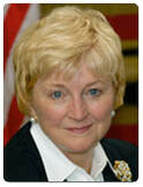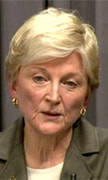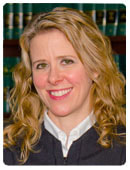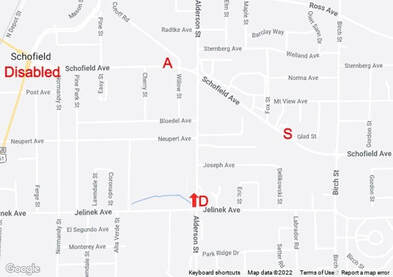|
Note: We are crunching Supreme Court of Wisconsin decisions down to size. The rule for this is that no justice gets more than 10 paragraphs as written in the actual decision. The "upshot" and "background" sections do not count as part of the 10 paragraphs because of their summary and very necessary nature. We've also removed citations from the opinion for ease of reading, but have linked to important cases cited or information about them. Italics indicate WJI insertions except for case names, which also are italicized. The case: State of Wisconsin v. Charles W. Richey Majority: Justice Rebecca Frank Dallet (13 pages), joined by Justices Ann Walsh Bradley, Rebecca Grassl Bradley, and Jill J. Karofsky Dissent: Justice Patience Drake Roggensack (6 pages), joined by Chief Justice Annette Kingsland Ziegler and Justice Brian K. Hagedorn The upshot The Fourth Amendment requires a police officer to have particularized reasonable suspicion that a crime or non-criminal traffic violation took place before performing a traffic stop. Here, a stop based on the generic description of a Harley-Davidson motorcycle recently seen driving erratically in the area fell short of that threshold. . . . * * * We therefore reverse the decision of the court of appeals and remand to the circuit court with instructions to vacate the judgment of conviction and to grant Richey's motion to suppress. Background Officer Alexis Meier was on patrol in the Village of Weston at 10:59 PM on a Saturday night in late April. Over the radio, she heard a report that a sheriff's deputy was investigating a disabled motorcycle at a nearby intersection. After just fifteen seconds, the deputy cleared that stop without explanation. Five minutes later, at 11:04 PM, that same sheriff's deputy told nearby officers to be on the lookout for a Harley-Davidson motorcycle driving erratically and speeding north on Alderson Street (near the intersection with Jelenik Avenue)—approximately a mile away from the location he had given for the disabled motorcycle. The sheriff's deputy did not give any additional details about either the motorcycle or its driver. Officer Meier later said that she believed that the motorcycle the deputy saw on Alderson Street was fleeing police. Five minutes after the deputy's report, at 11:09 PM, Officer Meier spotted a motorcycle driving east on Schofield Avenue a little more than a block west of the intersection with Alderson Street—about a half-mile from the reported location of the speeding Harley. Traffic was light at that time of night. Additionally, Officer Meier had seen relatively few motorcycles out that early in the year and none around the time of the deputy's report. Meier looked up the registration, which showed that it was a Harley-Davidson registered to Richey. She followed the Harley-Davidson for several blocks, but did not see any erratic driving, speeding, or other traffic violations. Meier nevertheless performed a traffic stop, suspecting that this Harley-Davidson was the one seen driving erratically on Alderson Street five minutes earlier. The court included a map to aid the reader: "Disabled" shows the disabled motorcycle location at 10:59 PM; "D" with an arrow indicates the spot and direction of the motorcycle reportedly driven erratically at 11:04 PM; "A" indicates where Meier first saw Richey motorcycle on at 11:09 PM; and "S" indicates where Meier stopped Richey. After the stop, Officer Meier learned that Richey was the driver and developed evidence supporting an arrest for his eighth operating while intoxicated (OWI) offense. Richey moved to suppress that evidence, arguing that the stop violated the Fourth Amendment because it was not supported by reasonable suspicion. The circuit court denied the motion and the court of appeals affirmed.  Dallet Dallet The guts The Fourth Amendment to the United States Constitution guarantees "[t]he right of the people to be secure in their persons . . . against unreasonable searches and seizures." Investigative stops, including traffic stops, are seizures and must therefore comply with the Fourth Amendment. To conduct an investigative stop, the police must have "reasonable, articulable suspicion that criminal activity is afoot." Reasonable suspicion must be founded on concrete, particularized facts warranting suspicion of a specific individual, not "'inchoate and unparticularized suspicion[s] or hunch[es].'" We assess reasonable suspicion in light of the totality of the circumstances. Thus, we look at the "whole picture" to determine whether the officer had reasonable suspicion, not each fact in isolation. The whole picture here includes the following information known to Officer Meier before she stopped Richey's motorcycle:
Although we acknowledge that it is a close question, we hold that the stop was not supported by reasonable suspicion. To clear the reasonable-suspicion threshold, Officer Meier's suspicions had to be particularized; she needed concrete reasons for believing that Richey's Harley-Davidson and the one seen five minutes earlier speeding north on Alderson Street were one and the same. But the sheriff's deputy's generic description of a Harley-Davidson gave her very little to work with. Except for the manufacturer, she knew nothing specific about the Harley the deputy saw—not the model, type, size, or color, let alone a license plate number. Nor did she know anything about the driver, what he or she was wearing, whether he or she wore a helmet, or even whether the driver appeared to be a man or a woman. And although she followed Richey for several blocks before initiating the stop, there is no indication that she radioed the deputy during that time to ask for more details. The State nevertheless argues that Officer Meier's suspicions were particularized because Richey's motorcycle "fit a highly specific and particular description." Namely, it was a Harley driving in the same general area as the deputy's report late in the evening and at a time of year when relatively few motorcycles were on the roads. These facts are part of the totality of the circumstances, but they are not enough to transform Officer Meier's hunch into particularized reasonable suspicion. For starters, the "highly specific" description of a Harley-Davidson could apply to a large number of vehicles. After all, Wisconsin is the home of Harley-Davidson, and it is one of, if not the most popular manufacturers of motorcycles in Wisconsin. Although reasonable suspicion is a low bar, it is not so low that it allows the State to stop so many otherwise law-abiding citizens based on such a generic description. Additionally, although the circuit court found that it was "the beginning, very beginning, of [motorcycle] season," it also acknowledged that "[c]ertainly, people drive their bikes in April." That Richey's Harley was spotted close to the location of the deputy's call just five minutes later does not add much to the particularity of Officer Meier's suspicions either. Although proximity in time and place to a report of criminal activity can, under some circumstances, provide some of the particularity that is otherwise lacking in a report of criminal activity, Richey's exact location and direction of travel raise more questions than they answer. Returning to the map above, the letter "D" marks where the deputy saw the erratic driver, and the arrow shows the direction of travel. Although Richey was seen in that general area five minutes later, at the spot marked with the letter "A," we note that Richey was headed east on Schofield Avenue towards the intersection with Alderson Street at that time. In other words, Richey was driving towards the reported location of the erratic and speeding driver when Officer Meier first saw him. Given that Officer Meier thought the erratic driver was fleeing police that would be a strange choice. Additionally, counsel for both parties acknowledged at oral argument that the speed limits in the area were likely the 25 or 30 mile-per-hour limits applicable to most city streets. Even at normal speed, it would take only about a minute to travel from the location of the deputy's report to where the officer saw Richey, and a driver fleeing police at high speed could have gone much farther in the same amount of time. Thus, in order for Richey to have been the subject of the deputy's report, he would have had to have driven north on Alderson Street at high speed, ridden around the general area for several minutes, and eventually looped back in the direction he came from while now driving normally. This unlikely sequence of events, when coupled with the deputy's generic description of a Harley- Davidson headed north on Alderson Street, demonstrates that Officer Meier's suspicions were not sufficiently particular to Richey. * * * . . . . Here, the sheriff's deputy reported a Harley-Davidson driving erratically north on Alderson Street at high speed and then lost sight of it. And Officer Meier had to use a combination of logic and guesswork to locate that motorcycle. The problem is that . . . the deputy gave Officer Meier little on which to ground her logic. She did not know anything about the motorcycle other than that it was a Harley-Davidson and she knew nothing about its driver. And the timing and location at which Officer Meier first saw Richey did not fill those gaps, since these facts support only a tenuous inference that Richey was the motorcyclist Officer Meier was looking for. Accordingly, we hold that, in light of the totality of the circumstances, Officer Meier lacked reasonable suspicion to perform the stop. . . .  Roggensack Roggensack The dissent Reasonable suspicion is a common-sense test based on the totality of the circumstances known to the officer at the time of the seizure. Stated otherwise, "was the action of law enforcement officers reasonable under all the facts and circumstances present[.]" Reasonable suspicion includes all factual circumstances and the reasonable inferences arising from those facts. I conclude that the record before us fully supports reasonable suspicion to stop Charles W. Richey; and therefore, evidence of Richey's eighth Operating While Intoxicated (OWI) violation was admissible. There is nothing in the record that allows us to conclude Officer Meier's inference that Richey was the motorcyclist her colleague warned of was unreasonable. Because the majority opinion refuses to accept reasonable inferences from undisputed facts, it enables Richey to achieve suppression of evidence of drunk driving that was apparent after he was stopped. Accordingly, I respectfully dissent. * * * The question here is at what point does societal interest in investigating a reported law violation rise to the level of reasonably supporting an investigative stop. LaFave has identified six factors that we have concluded should be considered in assessing whether the facts and the reasonable inferences from those facts support reasonable suspicion for an investigatory stop: (1) [T]he particularity of the description of the offender or the vehicle in which he fled; (2) the size of the area in which the offender might be found, as indicated by such facts as the elapsed time since the crime occurred; (3) the number of persons about in that area; (4) the known or probable direction of the offender's flight; (5) observed activity by the particular person stopped; and (6) knowledge or suspicion that the person or vehicle stopped has been involved in other criminality of the type presently under investigation. Here, Officer Meier clearly articulated that only five minutes before she saw Richey, she was asked to be on the lookout for a Harley-Davidson motorcycle that another officer had observed speeding and driving in a reckless manner. When she saw Richey, she called in the license plate on his cycle and confirmed that his bike was a Harley-Davidson. Her sighting was within the geographic area in which the speeding motorcyclist was seen. In addition, she had seen no other motorcycles in that area and it was late at night when she stopped Richey. Furthermore, it was reasonable to infer that Richey was the driver of the Harley-Davidson another officer had reported as speeding and committing other traffic violations. Richey was present in the same area as the reported traffic violator; his presence was within five minutes of (the sheriff deputy's) report and request that other officers be on the lookout for a Harley-Davidson motorcyclist. It was late at night and Officer Meier had seen no other motorcycles. April 28, the date of the stop, also was too early in the season for many motorcyclists to be out. It was possible that if Officer Meier did not act "immediately the opportunity for further investigation would be lost[.]" "A minimal amount of facts may, under these circumstances, be given greater weight than if the opportunity to act in the future is not foreclosed." It also is important to our analysis to note that there is nothing in the record that causes the inference that Richey was the driver of the Harley-Davidson motorcycle that (the sheriff's deputy) had seen speeding five minutes earlier to be an unreasonable inference. The majority opinion does not address why the brief period of time after the lookout was called and the defined location of the traffic violation that are part of the reasonable suspicion analysis, as LaFave and we required in (a prior case), do not support reasonable suspicion. The facts are not in dispute and reasonable inferences from those facts support reasonable suspicion that it was Richey who was speeding and driving his motorcycle in a reckless fashion. Based on the officer's articulable facts, it was not unreasonable to stop Richey on that night. Accordingly, I would affirm the court of appeals and I dissent from the majority opinion.
0 Comments
The SCOW docket: Drop-kicking drop boxes, part 4 (the Roggensack and Grassl Bradley concurrences)8/2/2022 Note: We are breaking our own rules again. WJI's "SCOW docket" pieces generally include decisions, dissents and concurrences all in one post. This time, with this case, we are doing it in four: First the lead decision, then the dissent, and then, in two separate posts due to length, the three concurrences. Here's the first concurrence; today we publish the second and third. Why? Because this package of writings is significant and gives insight into how SCOW's seven justices think. And instead of allowing each writing justice 10 paragraphs, we are allowing up to 20. We've also removed citations from the opinion for ease of reading, but have linked to important cases and laws cited or information about them. Italics indicate WJI insertions except for case names, which also are italicized. The case: Richard Teigen and Richard Thom v. Wisconsin Elections Commission Concurrence: Justice Patience D. Roggensack (14 pages) Concurrence: Justice Rebecca Grassl Bradley (17 pages), joined by Chief Justice Annette K. Ziegler and Roggensack Concurrence: Justice Brian Hagedorn (35 pages) Dissent: Justice Ann Walsh Bradley (18 pages), joined by Justices Rebecca F. Dallet and Jill J. Karofsky Majority/Lead Opinion: Grassl Bradley (52 pages), joined by Ziegler and Roggensack; joined in part by Hagedorn Intervenor defendant-appellants included the Democratic Senatorial Campaign Committee, Disability Rights Wisconsin, Wisconsin Faith Voices for Justice, and the League of Women Voters of Wisconsin.  Roggensack Roggensack The majority opinion concludes that the Wisconsin Elections Commission's (WEC) documents (hereinafter memos) are invalid because ballot drop boxes are not legal in Wisconsin and because absentee ballots must be personally delivered by the voter to the municipal clerk at the clerk's office. I agree, and join the majority opinion. I write further to explain that, under Wisconsin statutes, it is the elector who shall mail the absentee ballot to the municipal clerk. Accordingly, I respectfully concur. *** The circuit court decided that the elector was required to personally mail his or her own completed ballot to the clerk's office. Affirming the circuit court's decision is expressed in several briefs (sic), as is the need for uniform guidance. The WEC has issued memos that encourage drop boxes over mail-in ballot returns, and municipal clerks and election officials have acted on those memos. Teigen is a Wisconsin voter who is affected by the WEC's memos. Because the controversy is justiciable, I proceed to the merits of Teigen's statutory interpretation claim with regard to mailing absentee ballots, and conclude that the memos encourage drop boxes over mailing completed ballots and are inconsistent with Wis. Stat. § 6.87(4)(b)1. Therefore, they are contrary to law. *** The statute provides in regard to mailing that absentee ballots "shall be mailed by the elector . . . to the municipal clerk." Electors are statutorily defined as "[e]very U.S. citizen age 18 or older who has resided in an election district or ward for 28 consecutive days before any election where the citizen offers to vote[.]" Accordingly, when the statute says "the elector[,]" it means, the voter. The plain statutory text, provides that if a ballot is returned by mail, it is the "elector" who does the mailing. The legislature could have said "may be mailed by the elector" if it were not mandatory that the elector do the mailing. ... *** That agents are not permitted by the terms of Wis. Stat. § 6.87(4)(b)1 to mail absentee ballots is further supported by comparing the language in that statute with other statutes in which the legislature has explicitly allowed an agent or non-elector to participate in the absentee voting process. Those statutes, in keeping with the policy in Wis. Stat. § 6.84(1), have formalistic, regulated conditions attached. For example, when a voter is a member of a sequestered jury, the legislature has provided very detailed instructions about voting and returning the ballot where a non-voter participates. ... Another example of the legislature's recognition of agents involved in voting or ballot return is found in Wis. Stat. § 6.86(3)(a) for hospitalized electors. ... Wisconsin Stat. § 6.87(5) also permits the use of an agent when the elector is disabled. ... Once again, when the legislature decided that use of an agent in voting was permissible, it specified the circumstances under which an agent could be employed and defined criteria for performing as an agent in regard to absentee ballots. Accordingly, because the text and context of § 6.87(4)(b)1. instruct me to do so, I conclude that no one but the elector may mail an absentee ballot unless the elector and his or her designated agent fit within a different statutory circumstance that explicitly permits it.  Grassl Bradley Grassl Bradley This court's binding precedent allows WEC – a creature of the legislature authorized only to implement Wisconsin's election laws – to make law by executive fiat, thereby granting it a potent "Badge[] of Domination[.]" In Trump v. Biden, a majority of this court gave WEC's "advice" the force of law. It declared this "advice" is "the rulebook" for elections – never mind what the statutes enacted by the legislature say. ... Even properly promulgated administrative rules do not have this kind of weight; in the hierarchy of laws, rules fall beneath statutes (if rules may even be called law). I would overrule Trump, but it remains binding precedent under which the WEC memos have the force of law. Because a majority of this court accords them this effect, they must be rules. Because they were not promulgated according to statutorily prescribed procedures, they are invalid for this additional reason. ... This court's decision in Trump gave WEC the power to materially alter how elections in this state are conducted – without a single procedural check. Trump should be overruled, but if the court continues to hold the memos need not be promulgated as administrative rules, they should at least be subject to the statutory procedures we struck down in SEIU (Service Employees International Union, Local 1 v. Vos). As the law stands, WEC's staff have absolute prerogative power. The constitution does not permit such corruption of the carefully calibrated powers among the branches of government. In that case, Grassl Bradley writes, SCOW denied the legislature a role in previewing and clearing guidance documents issued by the administration. *** Although the memos should not have the force of law, the majority erroneously concluded otherwise in Trump. In that case, Donald Trump, the incumbent President, and his campaign appealed the results of a recount in two Wisconsin counties. The ballots President Trump sought to strike fell into four categories; two are most relevant in this case. First, he argued "that a form used for in-person absentee voting [wa]s not a 'written application' and therefore all in-person absentee ballots should be struck." Second, President Trump argued "that municipal officials improperly added witness information on absentee ballot certifications, and that these ballots [wer]e therefore invalid." As the majority acknowledged, "Wisconsin law provides that a 'written application' is required before a voter can receive an absentee ballot, and that any absentee ballot issued without an application cannot be counted." A majority of this court refused to consider whether the form utilized for in-person absentee voting, EL-122, constituted a written application. It noted, "both counties did use an application form created, approved, and disseminated by the chief Wisconsin elections agency." The majority emphasized "local election officials used form EL-122 in reliance on longstanding guidance from WEC." Therefore, it concluded, "[p]enalizing the voters election officials serve and the other candidates who relied on this longstanding guidance is beyond unfair." "To strike ballots cast in reliance on the guidance now, and to do so in only two counties, would violate every notion of equity that undergirds our electoral system." In Trump, a majority of this court allowed its notions of "equity" and "unfair[ness]" to trump the law. Invoking the same rationalizations, the majority declined to examine whether election officials violated a statute by adding missing witness information to absentee ballot certifications. Wisconsin Stat. § 6.87(6d) provides, "[i]f a certificate is missing the address of a witness, the ballot may not be counted." The majority defied this clear textual command because it was concerned that "election officials followed guidance that WEC created, approved, and disseminated to counties in October 2016." It continued, "the election officials relied on this statewide advice and had no reason to question it." Overall, the majority compared voting – the foundation of free government – to a football game: "[E]lection officials in Dane and Milwaukee Counties followed the advice of WEC where given. . . . Our laws allow the challenge flag to be thrown regarding various aspects of election administration. The challenges raised by the Campaign in this case, however, come long after the last play or even the last game; the Campaign is challenging the rulebook adopted before the season began. Election claims of this type must be brought expeditiously. The Campaign waited until after the election to raise selective challenges that could have been raised long before the election. . . . The Campaign is not entitled to relief, and therefore does not succeed in its effort to strike votes and alter the certified winner of the 2020 presidential election." (Emphasis added by Grassl Bradley.) |
Donate
Help WJI advocate for justice in Wisconsin
|
Copyright © 2024 Wisconsin Justice Initiative Inc.
The Wisconsin Justice Initiative Inc. does not endorse candidates for political office. The Wisconsin Justice Initiative Inc. is a 501(c)3 organization.
The Wisconsin Justice Initiative Inc. does not endorse candidates for political office. The Wisconsin Justice Initiative Inc. is a 501(c)3 organization.



 RSS Feed
RSS Feed